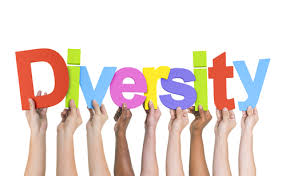It’s No Longer Possible For Brands Not To Be Diverse In Their Advertising Campaigns

I was recently invited by a high-end luxury online shopping brand for women to give feedback on its new online advertising campaign. First-off, I had not even noticed it’s new campaign and I suppose that was in itself telling, because it had not been memorable for me. However, when I did carefully consider it, I realised why it had not hit home…and that’s because it was not relatable and it didn’t connect with me. The advert looked out of touch and dated in the context of today’s conversations and I gave this feedback to the ‘enquiring luxury online shopping brand.’ But I also wondered how they could get it so wrong?!
Research shows that female consumers are calling time on airbrushing and have ‘perfection fatigue’, which has significant implications for brands. Therefore, it is no longer possible for brands not to be diverse in their advertising campaigns, and when I say ‘diverse’ I mean diversity in the age of models, race and reflective in body-types. While thin and prepubescent bodies are still the preferred choice for the runway and print media world, social media is giving a platform for celebrating more diverse body shapes. The #bodypositivity movement is empowering women to push against narrow and unattainable beauty standards and instead celebrate their differences and their imperfections.
Again, traditional magazines and other forms of advertising have always heavily featured white models largely from western European backgrounds. This lack of diversity has meant poor representation of other ethnicities. Yet, the explosion of social media has been incredibly positive for making beauty more accessible and inclusive.
Importantly, social media is no longer the natural habitat for millennials, as older women are using the medium to smash one of the most ingrained prejudices in fashion and beauty – age. With styling, skincare and beauty tutorials aimed at older women, they’ve celebrated and empowered this demographic. Furthermore, they’ve also vanquished the myth that fashion and beauty is limited to youth.
As a result, brands casting only young, thin, white, flawless models no longer feel relevant in the modern age. But crucially advertising campaigns are also very much about the story that a brand is trying to relay to its audience and is connected to the brand values of the company, so any kind ‘tokenism’ will immediately be apparent. It’s important for brands to not stop at advertising, but instead embrace realness and transparency in their values.
It is also important for those of us working in media and communications to keep pulling up those brands that are falling short. The needle is shifting. Diversity and inclusion should not stand as buzzwords; but treated as a reflection point where brand managers and content creators strive for approaches that avoid reductive stereotypes and unintentional continuation of classism, racism and sexism.
